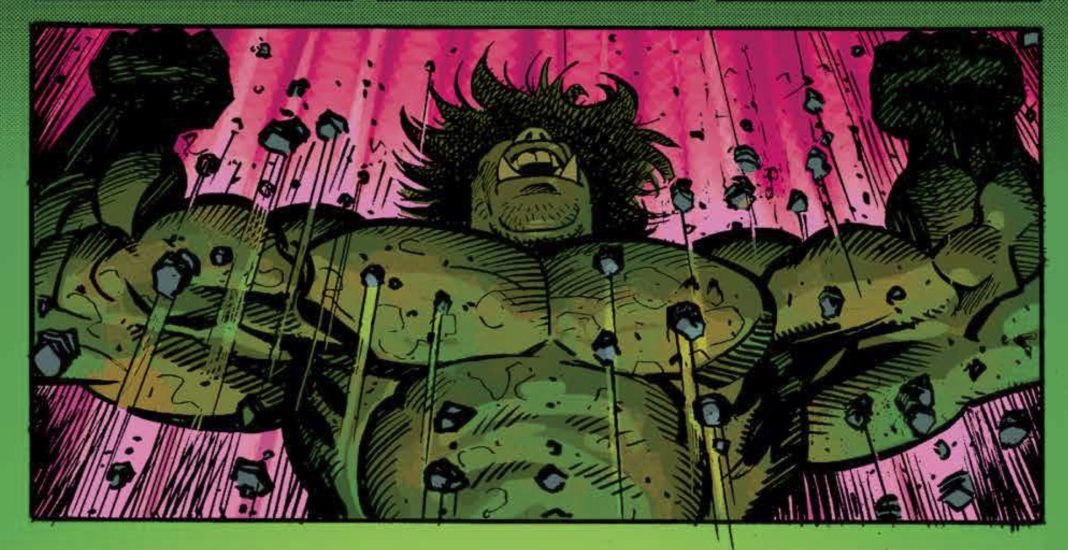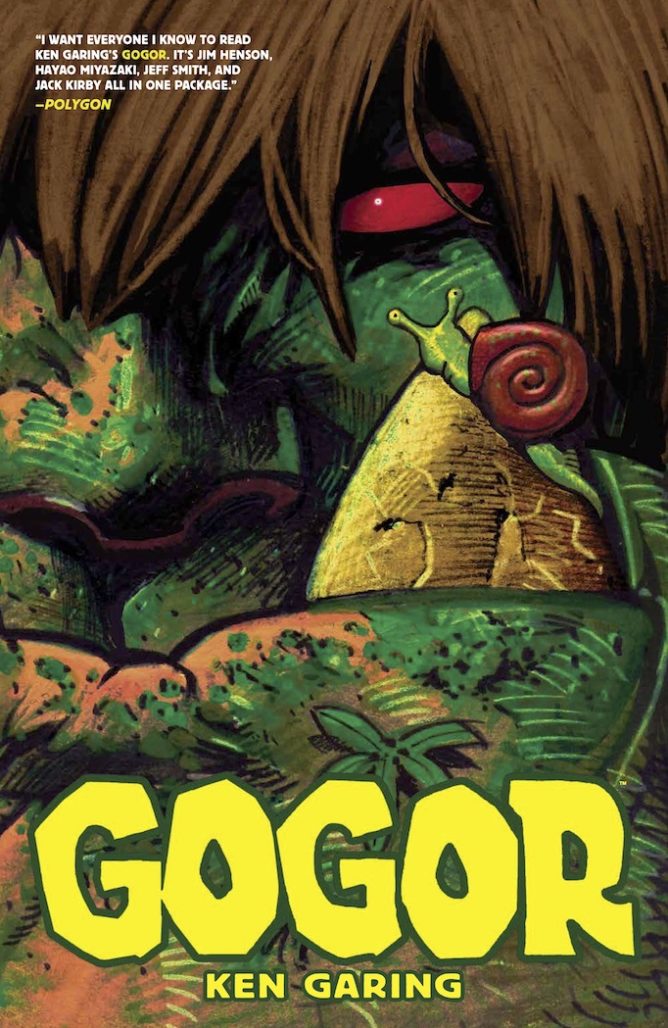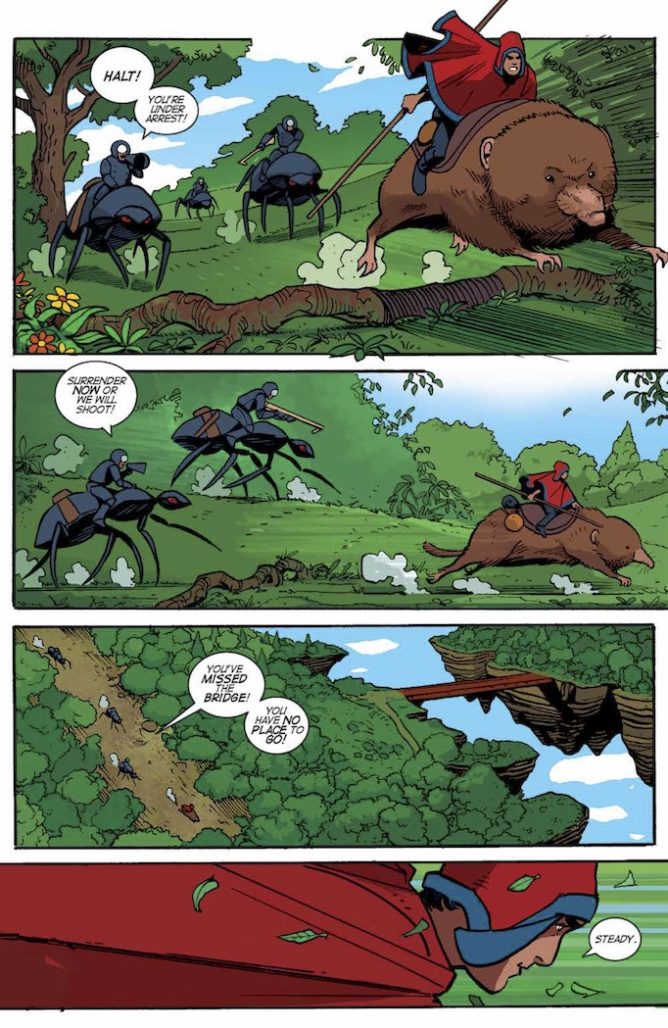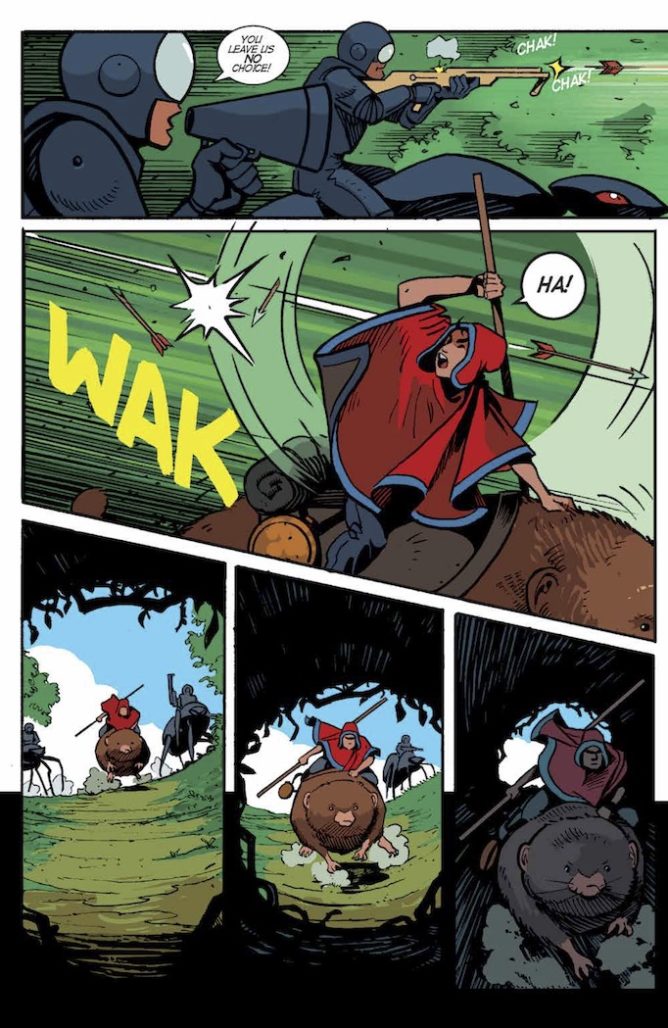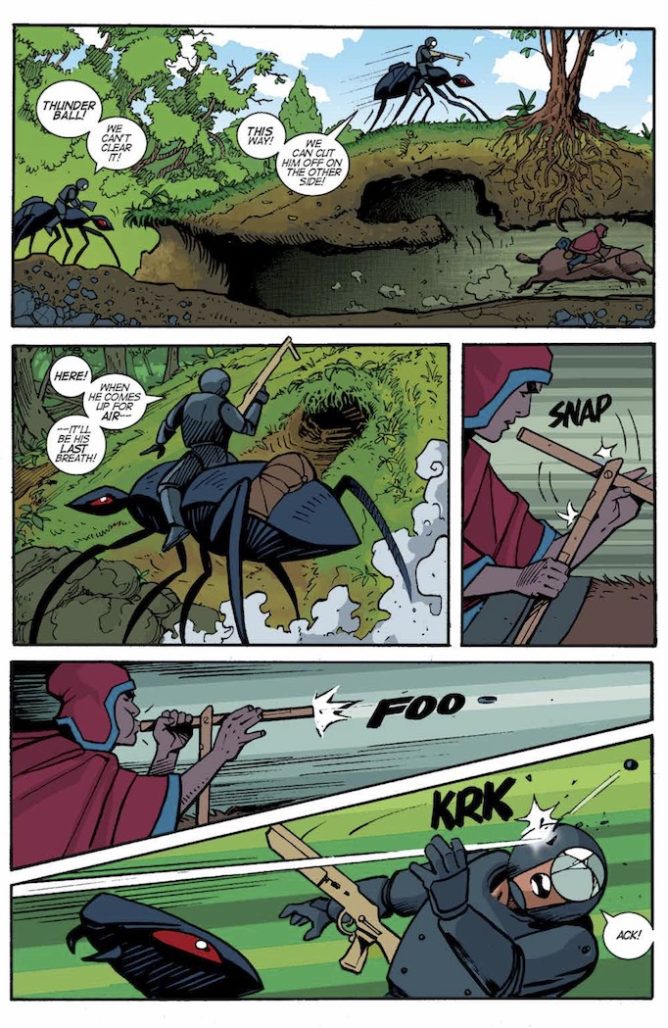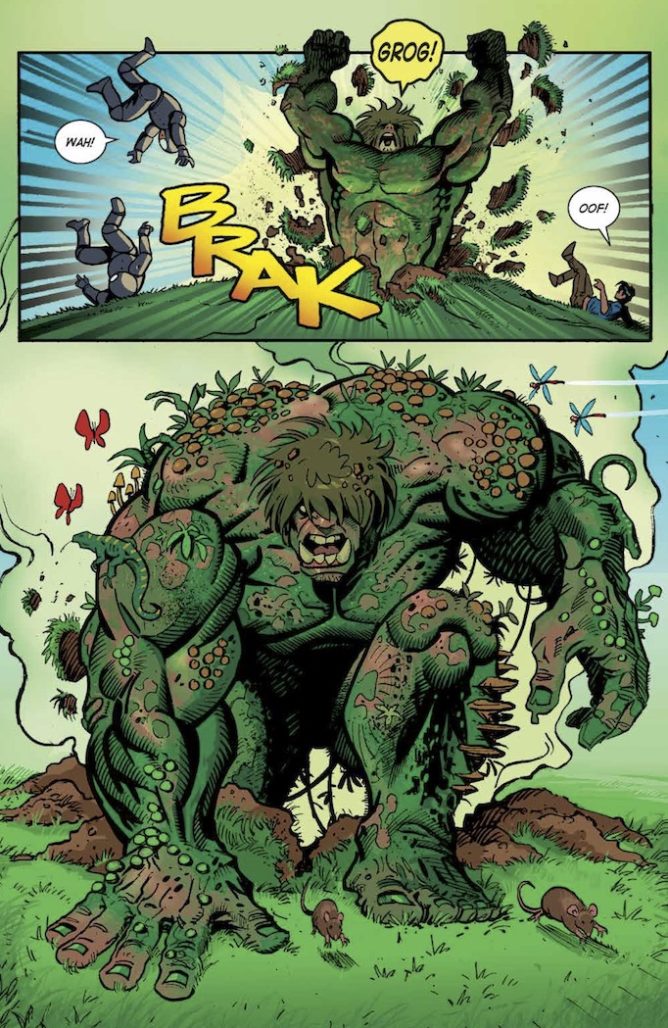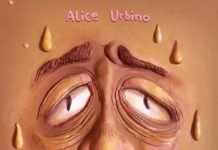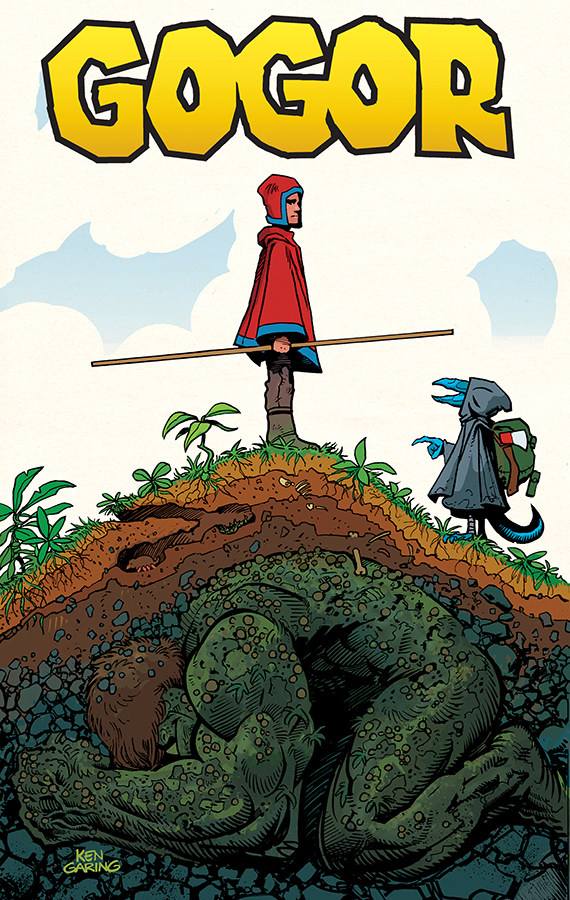Even though Jack Kirby’s presence looms large over the art form, we don’t see many modern comics that share his specific art style and sensibilities. GOGOR is a notable and appreciated break from that pattern, inspired by the work of Kirby and other classic illustrators. The pure-hearted adventure comic harkens back to decades past, reading like how you remember the comics of your childhood.
I was pleased to get the chance to interview GOGOR’s creator, writer and artist Ken Garing. Read my chat with him about his influences, interacting with younger readers, and the struggle direct market publishers face trying to reach YA audiences.
What are some of the comic books that inspired GOGOR?
Oh, all sorts of stuff; Richard Corben’s fantasy comics, Moebius’ Arzach and World of Edena, Joe Kubert’s TOR and Tarzan, Jack Kirby’s Devil Dinasour and Kamandi, Robert Crumb’s Big Yum-Yum Book, Hayao Miyazaki’s The Journey of Shuna…
All of those comics have a particular sense of space, shape, and movement. I noticed those elements were missing in a lot of modern comics and I wanted to tap into that. I also wanted to play with flat vibrant colors like some of those comics do. Especially after working on my sci-fi series Planetoid which had a very austere, almost-mechanical tone
What are some of its influences outside of comics?
The work of Jim Henson was a big inspiration; Dark Crystal in particular. I think he’s a really extraordinary and singular artist. He created a completely unique world.
Also, the fantasy writing of Jack Vance inspired me. I heard his name over the years but only started reading him in recent years. And Ursula Le Guin’s fantasy books have an empathetic tone I like a lot, with this combination of humanist politics with a sense of melancholy.
Can you describe your creative process as the writer and artist? Do you write full scripts before you start to draw or did the visuals come first?
It starts with loose sketches and notes. Then I make a bullet point list of scenes and I try to boil things down to the most interesting visual storytelling elements. For example, with GOGOR I had a whole world to introduce. I could start the comic with static establishing shots or have a block of text explaining things, but I opted to start in the middle of a chase scene and reveal the geography that way.
I also try to create thematic threads when I can. Like starting a scene with a caterpillar on a branch in the foreground and ending the scene with a panel in which there’s a butterfly. Even if readers don’t notice it, that kind of logic helps bookend things and ground the storytelling.
For the dialogue, I’ll accumulate choice lines while plotting things out but I’ll only fully script something if it’s a dialogue-heavy scene because that dictates the panel layout. By the time I start lettering, I’ll have a solid script, and then I’ll do a bit of editing during the lettering process itself.
We don’t see a lot of fantasy adventure comics like GOGOR published anymore. Was that an impetus for the series’ creation?
Partially, although I think these are just the kind of comics I make. My sci-fi series PLANETOID came out from Image in 2012, along with SAGA and PROPHET, and helped usher in this crazy sci-fi boom in comics. I remember being aware of the lack of science-fiction on the market at that time.
As for fantasy comics; I noticed some years ago that after Peter Jackson’s Lord of the Rings trilogy, fantasy art became very formulaic. The settings are always some variation on medieval Europe and the color palettes became very standardized and dull.
I grew up reading fantasy comics by artists like Moebius and Corben, where the images were very unique and odd. Every page was a surprise! I wanted to do something in that spirit.
Why do you think comics like GOGOR have become increasingly uncommon, especially in the direct market?
I would categorize GOGOR as a creator-owned comic with an original genre story. A comic like that only offers the content within its pages, nothing more and nothing less. But some elements in the direct market scoff at that. They want a Netflix series, a toy, a video game, a social media personality, a crossover event… The original content of the comic isn’t enough for them. The adventure and the storytelling and craft isn’t enough.
To be clear, I’m not talking about promotion, which is just part of the gig. And some of the things listed above aren’t necessarily bad. A GOGOR toy would be great! But that stuff comes after the comic has built up an audience, not before.
Also, there’s this trend in indie comics where original stories that are made to be accessible to a general audience are considered passé and work that is knowingly derivative and retro is very fashionable. And I think new/younger readers are confused by that approach because they aren’t in on the joke.
Are there any other modern creators you feel like are similarly capturing the spirit of classic comics like you are with GOGOR?
Well, some of the inspiration for GOGOR came from the work currently being done by veteran creators like Stan Sakai on Usagi Yojimbo or Richard Corben’s recent Murkyworld comic in Heavy Metal. But most new genre work I see seems to be either in the hip/ironic style or in the generic post-LOTR style mentioned above.
The last severak years have shown how hungry the young adult market is for comics. How do you get GOGOR in front of that audience?
My focus is in the direct market; in comic book shops. That’s where virtually all of my sales come from. So, if I want kids to read my comics they need to be in those shops.
In a broad sense, what I’d like to see is a turn away from screen-based media and an embrace of print. Child literacy rates are shamefully low and I think that reestablishing a print-based culture is really important right now.
But in the near term, I think the direct market needs to rally around comics that are actually appearing on the shelves and foster a coherent comic book store culture based around that. Otherwise, people will just look at comics on their phones and order trade paperbacks off Amazon.
How is Image uniquely suited to reach that market?
I think most Image books right now are aimed at a slightly older audience. But they do have an advantage in that they publish a wide range of original material and they give creators free rein to experiment. So, in theory, if a modern creator-owned property were to catch on with kids as Teenage Mutant Ninja Turtles did in the ’80s, Image would be the ideal publisher for that. When Image first came on the scene it was mostly teenagers reading their comics, myself among them.
Have you interacted with many younger readers of GOGOR? If so, what did you learn from the experience?
Yes, actually! That was one of the biggest surprises and delights for me. Funnily enough, GOGOR was not actually marketed as an all-ages or even YA book, but nonetheless, it found a young audience and in the most organic way possible, which was parents buying the comic and reading it with their kids. I got quite a few responses like this from parents and retailers. I even got some fan art from children which I ran in the back pages. One kid who drew a picture of GOGOR was 5 years old…
I learned that if you put a certain energy and intention into your work, it seems to find it’s own way in the world. So, I’m not surprised that little kids responded to it. Their eyes are unclouded.
Follow Ken through his blog and on Twitter @Ken_Garing. GOGOR is on sale now.
Matt Chats is an interview series featuring discussions with a creator or player in comics, diving deep into industry, process, and creative topics. Find its author, Matt O’Keefe, on Twitter and Tumblr. Email him with questions, comments, complaints, or whatever else is on your mind at [email protected].


